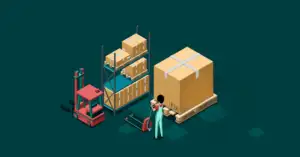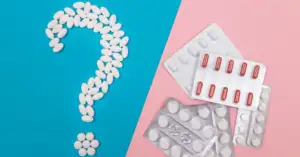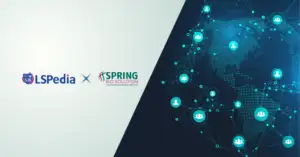What Are Reference Listed Drugs (RLDs), and Why Do They Matter?
A Reference Listed Drug (RLD) is the original, approved version of a medicine that future generic versions are compared against. Think of it as the “gold standard” for generic drug makers. These branded medicines are usually the first ones launched into the market and set the standard for quality, safety, and effectiveness.
If a company wants to make a generic version of a drug, they need to show that their product works just as well as the RLD. That’s why obtaining genuine, high-quality RLDs from a reliable reference listed drug supplier is so important.
The term “Reference Listed Drug” (RLD) is specific to the US Food and Drug Administration (FDA). In the European Union, the equivalent term is “reference medicinal product,” and other regulatory agencies may use different terminology. However, the underlying concept remains the same globally.
In this blog post, we’ll walk you through the entire process—from sourcing RLDs to how they make their way to patients.
What Exactly Is a Reference Listed Drug (RLD)?
A reference listed drug is an approved drug chosen by regulatory agencies like the FDA (in the US) or the European Medicines Agency (EMA, in the EU) as the official comparison for all generics. Generic drugs must prove they’re just as safe and effective as the RLD.
In the US, RLDs are listed in the FDA’s Orange Book, which helps generic manufacturers know which drug they should be comparing their product to. In the EU, the Community Register serves a similar function. These drugs are essential to maintaining consistency and trust in generic medicines.
Why Are RLDs Important in the Pharma Industry?
To get a generic drug approved, companies must prove that it’s bioequivalent to the RLD—that means it works the same way in the body. This process is part of something called an ANDA (Abbreviated New Drug Application) in the US, or a generic application in other regions.
To do that, companies need real samples of the RLD for things like:
- Lab testing
- Clinical trials (rarely, and only if bioequivalence cannot be established by other means)
- In-vitro/in-vivo comparisons
Sometimes, RLDs are sourced from multiple global markets (such as the US, EU, or Japan) to support regulatory filings in different countries, which can add complexity to procurement and compliance.
That’s why RLD sourcing is so crucial—it must be done properly and through trusted suppliers to meet strict regulations.
How the RLD Procurement Process Works
Here’s a step-by-step look at how RLDs in pharma are typically sourced:
1. Figuring Out What’s Needed:
Doctors, researchers, or pharmaceutical companies determine which RLD they need—maybe for a new study, a generic filing, or to treat a patient.
2. Checking What’s Available:
The procurement team checks if the RLD is available. They’ll usually contact global RLD suppliers or trusted RLD sourcing solutions to confirm availability, batch info, and paperwork.
3. Meeting Legal & Regulatory Requirements:
Before placing an order, buyers need to ensure they’ve met all legal and regulatory rules. This can include:
- Import or export licenses
- Controlled substance permits
- Approvals from health authorities
- Compliance with local and international regulations
4. Placing the Order:
Once everything is in place, the RLD is ordered from an approved reference listed drug supplier or a trusted RLD service and supplier. Depending on the region, this could be a manufacturer, wholesaler, or certified depot.
5. Receiving and Double-Checking:
When the RLD arrives, it’s important to check:
- Batch and expiration dates
- Packaging and labeling
- Required documentation
Temperature-sensitive drugs may arrive in special packaging to keep them safe during transit.
6. Storage and Use:
RLDs should be stored as instructed by the manufacturer. If not stored properly, their quality may suffer, which could affect test results or patient safety.
In many cases, RLDs are not dispensed directly to patients but are used strictly for research, development, and regulatory submission purposes.
The RLD Supply Chain: From Manufacturer to Patient (or Lab)
The reference listed drug supply chain includes several important players:
• Manufacturing:
Innovator pharmaceutical companies create the RLD following strict guidelines known as Good Manufacturing Practices (GMP).
• Distribution:
After production, the RLD is sent to authorized RLD sourcing solutions partners or distributors who are responsible for safely storing and moving the drugs.
• Inventory Management:
Wholesalers and pharmacies keep track of their stock and reorder as needed to make sure they don’t run out of these essential medicines.
• Dispensing:
Once prescribed, the RLD is dispensed by pharmacists or healthcare professionals who verify everything is in order. For RLDs used in research or generic development, the product is delivered to the relevant labs or regulatory teams.
• Patient Use:
Patients take the RLD as prescribed. If needed, they’ll return for refills, and the cycle begins again.
What Do Innovator Pharmaceutical Companies Do?
These companies don’t just make the drug—they manage the entire lifecycle of the reference drug sourcing process. Their roles include:
- Research & Development: Discovering and testing new medicines
- Regulatory Approvals: Submitting data to agencies like the FDA and EMA
- Manufacturing: Making the medicine using GMP guidelines
- Distribution: Working with RLD suppliers to get the product to the market
- Marketing & Sales: Promoting the drug to doctors and healthcare systems
- Supply Chain Oversight: Making sure the drug is always available and avoiding stockouts
- Post-Marketing Surveillance: Monitoring the drug’s safety and effectiveness after launch (pharmacovigilance)
Common Challenges in RLD Sourcing
Even though it’s a well-established process, RLD sourcing can still face roadblocks:
• Fake Products: Buying from unauthorized sellers can result in counterfeit drugs
• Delays in Approvals: Different countries have different rules, which can slow things down
• Supply Issues: Manufacturing problems, product withdrawals, or shipping delays can lead to shortages
• Global Sourcing Complexity: Regulatory requirements may differ across countries, and some RLDs may need to be sourced from multiple markets for global submissions
How to deal with these challenges:
- Always buy from licensed RLD services and suppliers
- Keep up with inventory forecasts
- Make sure all paperwork and regulatory documents are in order
- Monitor regulatory updates in all relevant markets
Why Reliable RLD Sourcing Matters
Having consistent access to quality reference listed drug supply is essential for everything from patient care to developing generic drugs. As demand for generics continues to rise, so does the need for dependable RLD suppliers and smart RLD sourcing solutions.
Whether you’re developing a new generic, running lab tests, or treating patients—knowing how to properly source an RLD makes all the difference.
If you need help sourcing authentic RLDs, work with experienced and compliant partners who understand both local and global regulatory requirements. Reliable sourcing protects patients, supports innovation, and helps bring safe, effective generics to market.
For further assistance with RLD sourcing, compliance, or supply chain solutions, our team is here to help with safe, compliant, and on-time delivery tailored to your needs. Let’s connect!
Looking for a trusted RLD supplier?
Spring Bio Solution ensures secure, compliant, and timely RLD sourcing across global markets. Let’s connect and simplify your procurement journey.
FAQs:
What are reference-listed drugs?
Reference-listed drugs (RLDs) are the original, FDA-approved versions of medications that serve as the standard for comparing generic drugs. Think of them as the “gold standard” in pharmaceutical development. When a company wants to create a generic version of a drug, they must show that it performs the same as the RLD in terms of safety, quality, and effectiveness. RLDs are listed in the FDA’s Orange Book and are essential for ensuring that generics meet the right standards before reaching patients.
What is the difference between ANDA and RLD?
An RLD (Reference Listed Drug) is the original brand-name medicine approved by the FDA, while an ANDA (Abbreviated New Drug Application) is the regulatory submission made by a pharmaceutical company to get approval for a generic version of that RLD. To get approved, the ANDA must prove that the generic drug is bioequivalent to the RLD—it should work the same way in the body. In simple terms: the RLD is the benchmark, and the ANDA is the request to copy that benchmark safely and legally.
What is a reference medicinal product?
A reference medicinal product is the European equivalent of an RLD. It’s the original drug that has been approved by regulatory agencies like the European Medicines Agency (EMA) and is used as the standard for comparing generic or biosimilar medicines. Just like in the U.S., any generic drug application in the EU must demonstrate that it is therapeutically equivalent to the reference medicinal product. Though the terminology differs slightly, the concept is the same worldwide.





